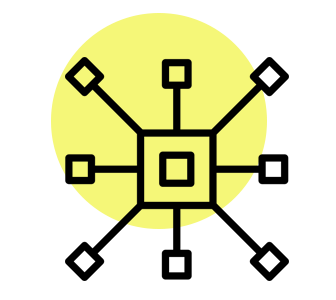Cloud Application Deployment
For businesses who undertake digital transformation, the Internet of Things (IoT) will gain a foothold in their business operations. As a company prepares to deploy an application across a wide array of devices such as mobile phones and tablets. There are considerations that need to be taken to determine how these applications will integrate with the backend systems and other solutions critical to operations.
Cloud Application Deployment Models that are Widely Used:

Recreate
This involves developers scaling the existing iteration to a new one before terminating the former and activating the latter. In simplest terms, Version A is worked on and upgraded into Version B. When ready, Version A is terminated when Version B is activated.

Rolling/Ramped Deployment
This is a method where developers work on a few iterations. Before slowly rolling out one version of an application by replacing one instance at a time. This way, one by one component of the existing application is iteratively deployed until we reach the end stage. Where we have a complete version of the updated application.

Blue/Green Deployment
The blue green deployment model is one where two models are deployed alongside each other with only one active at any given time. This allows developers to make the necessary updates to an application, test it and only then activate it. One of the key differentiators of this model is that the blue environment can be saved, hence if there are any flaws in a new system, you can always roll back to the previous version.

Canary Deployment
The canary model allows the simultaneous deployment of two versions of a system with the majority of traffic directed towards the existing Version A, with the rest directed towards Version B. This would allow developers to observe both systems and make changes to the new system where they see fit. Once the developers determine that Version B is stable enough, they will then terminate Version A and fully activate the former.

Shadow Deployment
This is a deployment model where both versions are released together, but traffic is routed from one version to the other. This often involves directing traffic from Version A to Version B and then observing how Version B fares with production load after the incorporation of new features. This can be a costly and complex process, but it is one undertaken by developers who wish to evaluate the performance of two iterations of a system without affecting traffic on front-end users.

A/B Testing
This is a testing model where two iterations of a system are activated and a select group of users are routed to try the new version with certain conditions set by the developer. The idea behind A/B testing is to evaluate the conversion rate of two iterations of the same system but with conditions imposed on the new system with newer features. This is a technique widely used to test conversion of a new feature. The version with the best conversion rate will eventually be rolled out.
Why Choose PointStar Consulting
PointStar Consulting is a leading financial digital transformation consultancy in Asia, serving the Singapore, Malaysia, Indonesia, Thailand, Vietnam, China, Taiwan, Japan and South Korean markets.
Headquartered in Singapore, PointStar Consulting has rapidly grown in the last 15 years with offices in Malaysia, Indonesia, and Thailand. PointStar Consulting specialises in helping its clients with business requirement discovery, cloud migration strategy, cloud application deployment, business application integration, business process automation, and cloud user adoption.
PointStar Consulting has one of the largest teams of Oracle NetSuite cloud enterprise resource planning (ERP) consultants, with a specially dedicated customer success division to ensure a smooth implementation for customers. Winning multiple awards since its inception, PointStar Consulting also offers a suite of cloud solutions encompassing automation of account reconciliation and the financial close process, inter-company financial consolidation, stack integration and workflow automation platform.
Read our blog article about Digital transformation, a must for 2022
Talk to our Cloud Consultant
Lead Generation
This form is created for lead generation.
"*" indicates required fields

